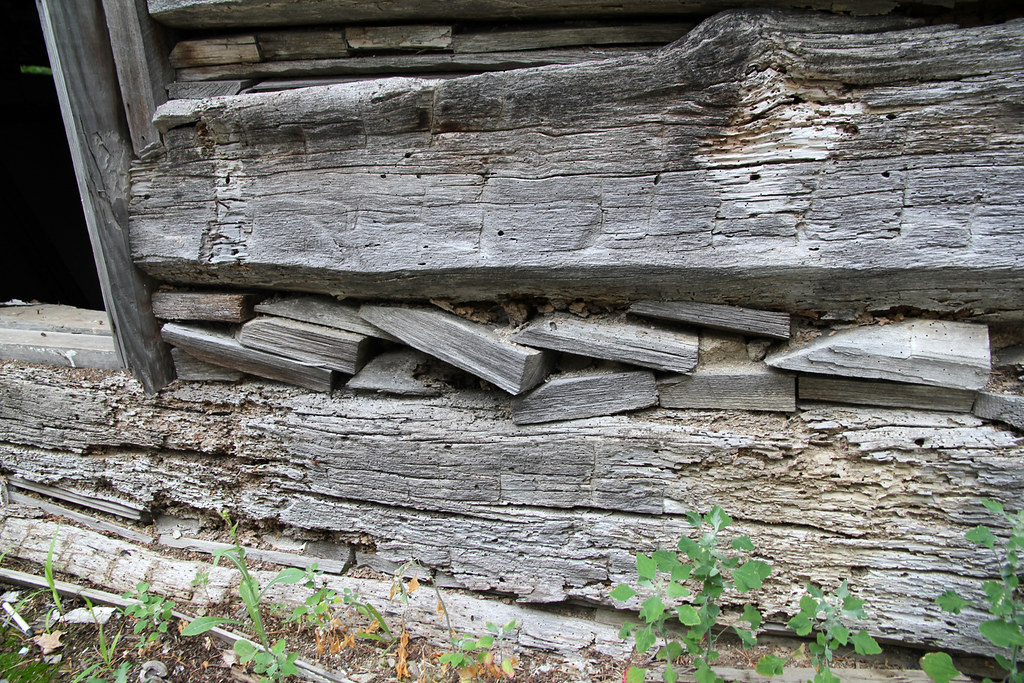Arnold, Jerome Township, Union County, Ohio
A delightful little house (21' by 17') in a most unlikely location. Arnold sprung up in 1893 as a railroad town; this home is likely an earlier building moved to the newly platted community at about that time. It's not a terribly old structure, as far as log houses go, but it's still of interest.
I talked briefly with the owner's father, who occupied the house in the 1950s and early 1960s. He quite graciously gave me permission to photograph it.
Here's an excerpt from the Ohio Historic Inventory form I wrote about the building:
One-and-a-half story log house of average size (21' x 17'), with two-bay front and rear facades. Doors are centered. Frame additions (housing a kitchen) formerly stood to the west and south, and were removed about five years ago. The standing seam roof is supported primarily by sawed lumber, but a few pole rafters are visible from the upper story. The ends of these rafters are exposed on the exterior. Until recently, the home was clad with drop siding. All window and door openings were enlarged; the original jamb boards are extant.
Logs are half-dovetailed, and measure about seven inches (depth) by ten inches (height). Like on many late log buildings, the notching is angled quite steeply. Most of the chinking remains intact, but much daubing is missing. The chinking consists primarily of small-ish chunks of wood, but several long boards and larger log pieces are used as well.
The interior consists of a single, gutted room; all flooring has been removed. A renovation (1890s-era?) left the interior plastered, but its logs were once exposed and whitewashed. A staircase, placed against the northern wall, ascends from west to east. This staircase is enclosed by cut lumber, not the usual vertical board partition. An opening for a wood-burning stove is cut into the west wall, adjacent to the rear door. This house likely always had an interior stove, for no fireplace opening is observable, and the whitewashed logs bear no marks that suggest the existence of such a fireplace. The upper half-story is supported by sawed joists. Pieces of wood plug the original joist mortises, which are above the floor level.
And now, some photos:
 |
| Front facade. |
 |
| South and west elevations. The house was sided until about five years ago, with additions to the south and west. |
 |
| All the house's openings were enlarged. Note the original jamb boards, visible at the sides of the door and window. |
 |
| Corner notching. |
 |
| Chinking. |
 |
| Not terribly intact. All finish trim has been removed, as has the floor. |
 |
| This home never had an enclosed corner staircase. |
 |
| The original whitewash is quite visible. |
 |
| At some point (probably following the move), this floor was lowered. The row of square-ish wood blocks marks the floor's original height. |
And, of course, a floor plan:
 |
|














No comments:
Post a Comment